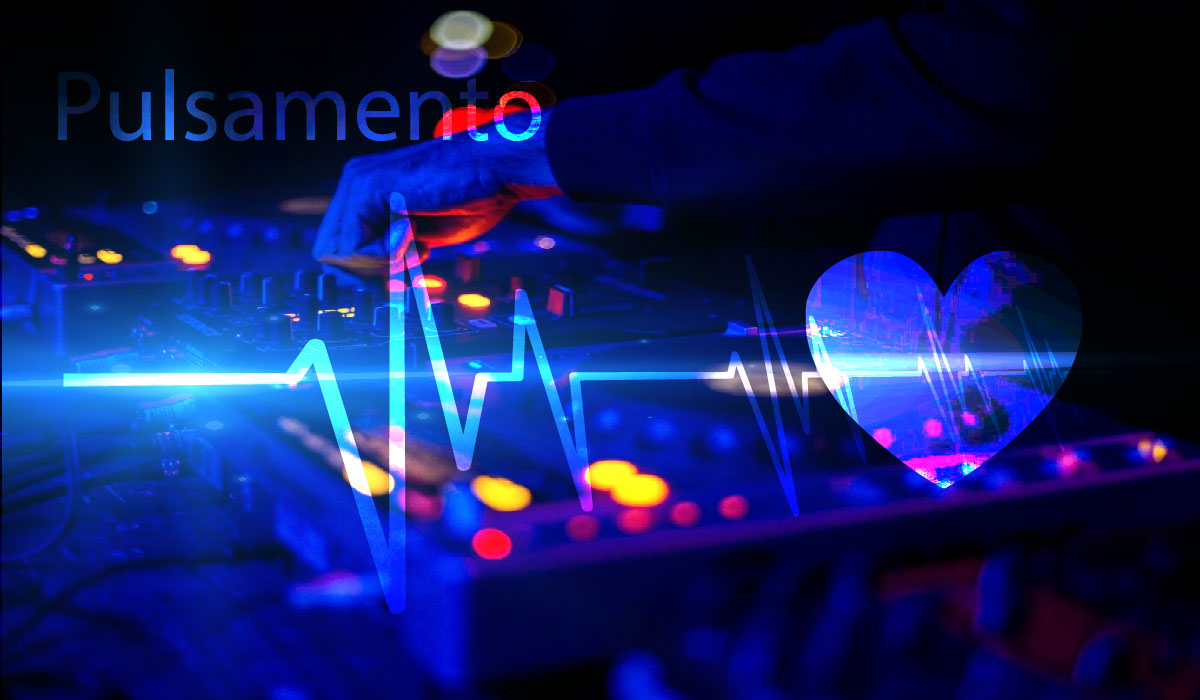Pulsamento, a term derived from the Spanish word “pulsar,” meaning to pulse or beat, is the rhythmic foundation that breathes life into musical compositions. This concept transcends the boundaries of genres, from the intricate fingerpicking of classical guitar to the syncopated rhythms of jazz and the passionate drive of flamenco. In this article, we will explore the multifaceted nature of pulsamento, its historical significance, its role in various musical styles, and how mastering it can transform a musician’s expressiveness and overall musicality. By delving into the depths of pulsamento, musicians and music enthusiasts alike can gain a deeper appreciation for the subtle, yet powerful, forces that shape the music we love.
Definition and Origin
Pulsamento is the steady rhythmic pulsation that underlies melodies and harmonies, providing a structure and flow that guides both performers and listeners through a musical piece. Its origins are as diverse as music itself, with roots in ancient musical traditions and a prominent presence in modern compositions. The concept of pulsamento is universal, appearing in various forms across cultures and musical genres. It is the heartbeat of music, giving it a consistent tempo and rhythm that is essential for the coherence and dynamics of a piece.
Historical Context
The history of pulsamento is intertwined with the evolution of music. In classical music, particularly in the works of classical guitar, pulsamento has been a cornerstone for articulating melodies and maintaining a steady tempo. Composers like Fernando Sor and Francisco Tárrega utilized pulsamento to bring rhythmic complexity and emotional depth to their compositions, transforming the classical guitar repertoire into a rich tapestry of sound and rhythm.
In the realm of jazz, pulsamento provided the backbone for improvisation and ensemble playing, with legends like Django Reinhardt and Wes Montgomery using it to create their distinctive grooves and swing. Flamenco music, with its fiery passion and intensity, relies heavily on pulsamento to drive its rhythms, using techniques like rasgueado and golpe to create a dynamic and expressive soundscape.
Pulsamento in Classical Music
In classical music, particularly for the classical guitar, pulsamento is not just a technique but an art form. It requires the musician to balance melody with rhythmic precision, creating a harmonious interplay that elevates the music to new heights. Composers like Fernando Sor and Francisco Tárrega wrote pieces that are masterclasses in pulsamento, demanding a high level of rhythmic accuracy and emotional expressiveness from the performer. These compositions are not just sequences of notes but journey through soundscapes that pulse with life and energy, guided by the steady rhythm of pulsamento.
Pulsamento in Jazz
Jazz music takes pulsamento and turns it into a canvas for creativity and improvisation. Jazz guitarists like Django Reinhardt and Wes Montgomery were masters of pulsamento, using it to lay down a rhythmic foundation that allowed them to explore complex improvisations and intricate melodic lines. Their use of pulsamento was not just functional; it was a statement of style and personality, a way to communicate feelings and stories through music. The pulsamento in jazz is dynamic, constantly adapting to the flow of the music and the interaction between musicians, creating a sense of spontaneity and excitement that is central to the genre.
Pulsamento in Flamenco
Flamenco is a genre where pulsamento is not just heard but felt. It is the driving force behind the intense emotions and dramatic expressions that characterize flamenco music. Guitarists in this genre use techniques like rasgueado (a rapid strumming technique) and golpe (percussive tapping on the body of the guitar) to accentuate the pulsamento, creating a rhythmic experience that is both visceral and mesmerizing. The pulsamento in flamenco is about more than keeping time; it is about creating an atmosphere, telling a story, and evoking deep emotions in the audience.
Fingerstyle Technique and Pulsamento
Fingerstyle guitar playing is a domain where pulsamento becomes a delicate dance of fingers on strings, each movement contributing to the overall rhythmic flow of the piece. This technique requires a high degree of control and precision, as the guitarist uses their fingers to pluck individual strings, creating intricate patterns that form the pulsamento. In fingerstyle, pulsamento is not just about maintaining a steady beat; it’s about weaving a tapestry of sound where each note plays a crucial role in the overall rhythm.
The challenge lies in coordinating the fingers to ensure that the pulsamento remains consistent and fluid, allowing the melody to emerge naturally and beautifully. Musicians need to practice extensively, focusing on the accuracy and timing of each finger’s movement, to master this intricate aspect of pulsamento.
Strumming Patterns and Pulsamento
In contrast to the meticulous nature of fingerstyle, strumming patterns offer a broader approach to creating pulsamento. When strumming an acoustic guitar or any strummed instrument, the musician uses a combination of upstrokes and downstrokes to produce a rhythmic pattern that serves as the foundation of the music.
The variety of strumming patterns available allows musicians to infuse their performances with different textures and dynamics, making pulsamento a versatile tool for expression. For example, a gentle, consistent strum can create a soothing, flowing pulsamento, while a more aggressive, varied strum can inject energy and intensity into the music. The key to mastering strumming-based pulsamento is to experiment with different patterns and to develop a sense of how each pattern affects the feel and flow of the music.
The Importance of Rhythmic Accuracy
Rhythmic accuracy is the cornerstone of pulsamento. Without it, the steady pulse that defines pulsamento becomes erratic and unstable, disrupting the flow and coherence of the music. Musicians must develop a strong internal sense of rhythm and timing to maintain pulsamento effectively. This often involves practicing with a metronome to internalize the beat and to ensure that each note or chord is played precisely on time. Rhythmic accuracy is not just about mechanical precision; it’s about feeling the pulse of the music and allowing it to guide your performance. By honing this skill, musicians can ensure that their pulsamento is both technically correct and emotionally resonant.
Adding Depth and Emotion through Pulsamento
Pulsamento does more than keep time; it adds depth and emotion to musical phrases. By varying the dynamics and articulation of the pulsamento, musicians can convey a wide range of feelings and moods. Delicate arpeggios can create a sense of intimacy and tenderness, while powerful chord progressions can evoke strength and passion. The subtle changes in volume, tempo, and emphasis within the pulsamento can dramatically affect the listener’s experience, transforming a simple melody into a profound emotional journey. Musicians who master the art of expressive pulsamento can use it to touch the hearts and stir the souls of their audience, making their music truly unforgettable.
Pulsamento’s Role in Improving Overall Musicality
Mastering pulsamento is not just about rhythmic skill; it’s about enhancing overall musicality and expressiveness. The discipline and control required to maintain a steady pulsamento translate into greater confidence and proficiency across all aspects of music performance. Musicians who have a firm grasp of pulsamento are better equipped to tackle complex compositions, to improvise with ease, and to collaborate effectively with other musicians. Pulsamento serves as a foundation upon which musicians can build their unique musical voice, allowing them to explore new territories of sound and expression with confidence and creativity.
Pulsamento in Contemporary and Electronic Music
In the realm of contemporary and electronic music, pulsamento is not confined to traditional instruments; it extends into the digital domain, blending acoustic nuances with synthesized sounds. This fusion creates a landscape where rhythmic pulses are both organic and electronically engineered, offering an expansive palette for creative expression. Producers and composers in genres like EDM, hip-hop, and ambient music use sampled guitar loops, drum machines, and synthesizers to craft pulsamento that drives the heartbeat of their tracks.
The flexibility of electronic music allows for experimentation with pulsamento, where tempo changes, syncopation, and layered rhythms can produce complex and captivating soundscapes. This modern approach to pulsamento not only broadens its application but also introduces new challenges and opportunities for musicians to innovate and redefine the rhythmic boundaries of their work.
Pulsamento in Songwriting and Composition
Songwriters and composers harness the power of pulsamento to structure their musical narratives, using it to create compelling melodies and dynamic arrangements. In songwriting, pulsamento serves as the scaffolding upon which lyrics and melodies are built, guiding the emotional trajectory of the song. Whether it’s a ballad, a rock anthem, or a pop hit, the pulsamento sets the pace and mood, influencing how listeners perceive and respond to the music. By experimenting with different rhythmic patterns and chord progressions, composers can manipulate pulsamento to evoke specific emotions and build tension or release within their compositions. This creative application of pulsamento is essential for crafting songs that resonate deeply with audiences, making it a vital tool in the songwriter’s arsenal.
Common Challenges in Mastering Pulsamento
While pulsamento offers immense potential for musical expression, mastering it comes with its own set of challenges. One common pitfall is the overemphasis on speed, where musicians prioritize fast playing over rhythmic precision and musicality. This can lead to a loss of groove and a disjointed performance. Another challenge is the neglect of dynamics and expression; focusing solely on hitting the right notes can result in a flat, monotonous pulsamento that lacks emotional depth. Additionally, timing issues can disrupt the flow of music, making it crucial for musicians to develop a strong internal sense of rhythm and to practice diligently with tools like metronomes to maintain consistency.
Learning and Practicing Pulsamento
To effectively learn and practice pulsamento, musicians must adopt a structured approach that emphasizes fundamentals and gradual progression. Starting slowly with basic rhythms and patterns allows for the development of muscle memory and rhythmic accuracy. As proficiency grows, musicians can gradually increase the complexity and speed of their pulsamento, challenging themselves while maintaining control and consistency. Regular, focused practice sessions are essential for refining technique and building confidence. Additionally, recording practice sessions and critically listening for feedback can help identify areas for improvement, providing a pathway for continuous growth and mastery of pulsamento.
Legendary Figures in Pulsamento
Throughout the history of music, certain legendary figures have epitomized the mastery of pulsamento, leaving an indelible mark on their genres. Andrés Segovia, the iconic classical guitarist, demonstrated unparalleled control and expressiveness in his pulsamento, bringing classical guitar compositions to life with his nuanced playing. In the flamenco world, Paco de Lucía revolutionized the genre with his virtuosic pulsamento, blending traditional rhythms with innovative techniques to create a signature style that influenced generations of guitarists. These legendary musicians not only showcased the technical prowess required for pulsamento but also its capacity to convey profound emotional and artistic expressions.
Conclusion
Pulsamento is more than just a musical technique; it is the heartbeat that gives rhythm and soul to a piece of music. From the classical guitarists of the past to the electronic music producers of today, mastering pulsamento is a journey of discipline, creativity, and emotional exploration. By understanding its history, embracing its challenges, and learning from the masters, musicians can unlock the full potential of pulsamento, enhancing their musicality and connecting with their audience on a deeper level.
FAQS
What is pulsamento?
Pulsamento refers to the steady rhythmic pulsation in music, created by the alternation of notes or chords. It serves as the underlying rhythm that supports melodies and harmonies, acting as the backbone of musical compositions.
Why is pulsamento important in music?
Pulsamento is crucial because it provides the rhythmic foundation that guides both performers and listeners through a composition. It adds depth, emotion, and structure to music, making it more expressive and coherent.
Can pulsamento be applied to different musical instruments?
Yes, pulsamento can be applied to virtually any musical instrument capable of producing rhythmic sounds, including guitars, pianos, drums, and even electronic instruments in contemporary music.
How long does it typically take to master pulsamento?
The time required to master pulsamento varies based on the individual’s skill level, dedication to practice, and musical background. With regular, focused practice, significant progress can often be made within a few months.
Are there any online resources to learn pulsamento?
Numerous online resources, including instructional videos, tutorials, and interactive courses, are available for learning pulsamento. Platforms like YouTube and various online learning sites offer a wealth of educational content for aspiring musicians.
READ ALSO: The Grand Duke Is Mine Spoilers: An In-depth Exploration
For More Information Visit Megamagazine















